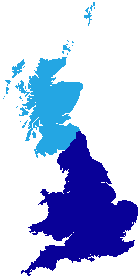- British landowners who want to find out more about property boundaries, land registration, adverse possession, rights of way, and
- British landowners who want to amicably, quickly and cheaply resolve a dispute that has arisen with their neighbours or,
- British landowners who need professional help with a serious dispute;
- Students studying British land law on a surveying or law course,
- British professionals seeking to update or broaden their knowledge of land law,
- Foreign academics and professionals making a comparative study of British and foreign systems of boundary demarcation and land registration.
These pages have information on:
- how property boundaries in England and Wales are defined
- frequently encountered property boundary problems;
- other land-related neighbour problems;
- saving money by wise management of a dispute;
- who to turn to for professional advice.
|
Avoid the misinformation about boundaries by reading Boundary Myths Busted. Then read in greater depth by clicking on the links at left to any pages that look interesting. Practitioners should read How to work out where the boundary is. Have a question? Try FREQUENTLY ASKED QUESTIONS. Looking for a specific topic? find it using our Site index. |
If you are a British landowner who has a problem with a boundary, once you have read the parts of this web site that are relevant to you, what should you do next?
1. You may have learned enough to have gained the confidence to negotiate directly with your neighbour to achieve an amicable settlement of the dispute.
2. You may want a better understanding of how what you have learned can be applied to your own circumstances. You can arrange to talk it over with our Boundary Advisor.
3. You may have reached the stage where you need
to instruct a professional who is expert in the issues in dispute. Contact us at
Jon Maynard Boundaries Ltd.
Alternatively,
You may want to discuss the matter further with others who can offer
sympathetic advice, and the internet forum below will be pleased to
hear from you.
 |
|
|
You may prefer to contact the Royal Institution
of Chartered Surveyors (RICS), who operate a Consumer Helpline (02476 868 555)
that will put you in touch with a chartered surveyor who specialises in boundary
demarcation and disputes and who will be prepared to spend half an hour discussing
and advising on your problem free of charge.
You may want a different perspective on the matters covered by this web site. Nicholas Isaac is a barrister at Tanfield Chambers in London who is experienced in all aspects of property litigation. He operates a web site known as the Party Wall & Boundaries Hub which has guidance on party walls, boundaries and easements. You will find this advice in a series of articles, judgments (many unreported and/or unavailable elsewhere) and case summaries as well as links to other useful online resources.
Readers should understand that, for the sake of clear writing, the use of male pronouns implies either male or female gender, the use of singular pronouns implies either a singular or a plural context, etc. |
Note to students: Please feel free to quote from, criticise or review the information you find on this web site, but please acknowledge the source of the material that you use. You should under no circumstances copy and paste the material on this web site into your own assignments and claim it as your own own work: be assured that your lecturers and tutors will be as familiar with this web site as they are with the standard (hardcopy published) textbooks on the subject and will recognise that the work is not your own. |
| Return to Top of Page |






